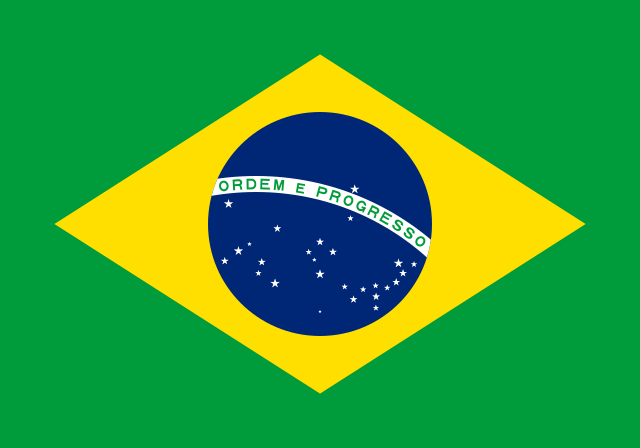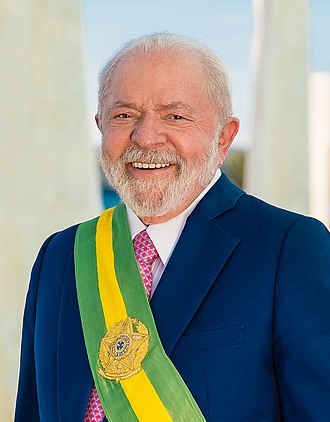Country Name: Brazil
Country Flag:

Indigenous Roots: For millennia, Brazil thrived as home to diverse indigenous peoples before European explorers set foot on its shores.
Colonial Legacy: In 1500, Portuguese explorer Pedro Álvares Cabral claimed Brazil for Portugal. Sugar became a major export, cultivated through a harsh system of slave labour.
Monarchy to Republic: Brazil achieved independence from Portugal in 1822, establishing a monarchy. The following century witnessed a shift to a republic in 1889, though the 20th century brought periods of military rule and dictatorship.
Modern Transformation: Since the late 20th century, Brazil has embraced democracy and experienced economic growth. However, challenges like poverty, inequality, and corruption persist.
BRICS Powerhouse: A founding member of the BRICS economic bloc (Brazil, Russia, India, China, South Africa) since its inception as BRIC in 2001, Brazil has emerged as a significant player on the world stage.
Brasilia
UTC-05:00 (Brasília Time) – Most of the country
UTC-02:00 (Fernando de Noronha and Atol das Rocas)
UTC-03:00 (Falkland Islands (Claimed by Argentina))
UTC-04:00 (Amazonas Time)
Position in world: 5
Total Area: 8.515 million square kilometres (3,287,597 sq mi)
Arable Land: 34.1%
Evergreen Rainfall: The Amazon rainforest region enjoys a perpetually hot and humid climate with abundant rainfall throughout the year.
Seasonal Savannah: The central plateau, known as the cerrado, experiences a distinct seasonal shift. Hot and wet summers give way to drier winters.
Tropical Coastlines: Lush eastern and southeastern coastal regions bask in a tropical climate, characterised by hot summers and comfortably mild winters.
Southern Subtropics: As you travel south, the climate transitions to subtropical. Here, summers are pleasant and warm, while winters bring cooler temperatures.
Brazil is a federation divided into 26 states and one federal district (Brasília).
Flooding Fury: Incessant downpours can trigger floods, particularly in the low-lying areas of the Amazon rainforest.
Drought’s Grip: The northeastern region of Brazil faces the constant threat of drought, severely impacting agricultural yields.
Landslide Peril: Mountainous regions, especially during heavy rains, are susceptible to landslides.
Deforestation’s Threat: The Amazon rainforest faces a looming threat from deforestation. This disrupts weather patterns and heightens the risk of natural disasters.
Brazil has a territorial sea extending 12 nautical miles (nm) from its coastline. It also has an Exclusive Economic Zone (EEZ) extending 200 nm from its coastline, within which it has exclusive rights to explore and manage natural resources.
Power Structure: Brazil functions as a federal presidential republic, meaning power is divided between the national government and individual states. The president holds significant authority, acting as both head of state and head of government. They are directly elected by the people and can serve a maximum of two consecutive terms.
Coalitional Calculus: Brazil’s political scene is a multi-party landscape with over two dozen parties vying for influence. This fragmented system often necessitates coalitions between parties to form a governing majority. However, party loyalty can be fickle, with politicians switching allegiances, leading to a lack of strong party discipline.
Left vs. Right Divide: Brazil’s political landscape has been historically marked by a tension between left-wing forces, exemplified by the Workers’ Party (PT), and right-wing ideologies. This continues to be a defining feature of Brazilian politics.
Allies
Brazil’s vast territory and economic clout position it as a major player in South America and on the world stage. Let’s explore its geopolitical landscape through the lens of neighbouring countries, regional partnerships, and key international allies.
South America holds particular strategic importance for Brazil. Mercosur, the Southern Common Market (Mercosur), stands as a key partnership. This trade bloc, formed by Brazil, Argentina, Uruguay, Paraguay (with Venezuela currently suspended), aims to achieve economic integration and foster regional cooperation.
China: As Brazil’s largest trading partner, China presents a complex relationship. While economic ties are strong, concerns regarding China’s growing influence are a constant undercurrent.
United States: This partnership holds economic and political weight, but differing stances on trade and foreign policy can occasionally strain the relationship.
European Union: This major trade bloc is a crucial source of foreign investment for Brazil.
BRICS Group: A founding member of this group of emerging economies (Brazil, Russia, India, China, and South Africa), Brazil leverages this platform to promote economic cooperation and challenge the dominance of established powers.
Government Type: Federal presidential republic
President:
Luiz Inácio Lula da Silva

(Term begin- current) (1 January 2023 – Present)
Workers’ Party (PT) – Left-wing
Social Liberal Party (PSL) – Right-wing
Brazilian Social Democracy Party (PSDB) – Center-right
Elections: Every 4 years
Upcoming elections:
October 2024
South-South Cooperation: Brazil emphasises cooperation with developing countries, particularly in Latin America and Africa.
Multilateralism: Brazil is a strong supporter of the United Nations and other international organisations.
Global Leadership: Brazil aspires to be a major player on the world stage and seeks leadership roles in international institutions.
Size in world: 8th
GDP: $2.3 trillion (2024)
GDP per capita: $10 599.07 (2024)
Currency: Brazilian real (R$ or BRL)
Dominant Economic Sector: Commerce
Market type: Mixed Economy
Social Landscape
Population: 217 million
Position: Class distribution
Upper : 6%
Middle: 47%
Lower : 47%
Gini Coefficient:
52 (where 0 = perfect inequality and 100= perfect equality)
Language
Official language: Portuguese
Others Languages: Spanish, Italian, German, Japanese, Korean
Religion
Dominant religion: Catholicism
Other religions: Islam, Judaism, Buddhism, Indigenous religions